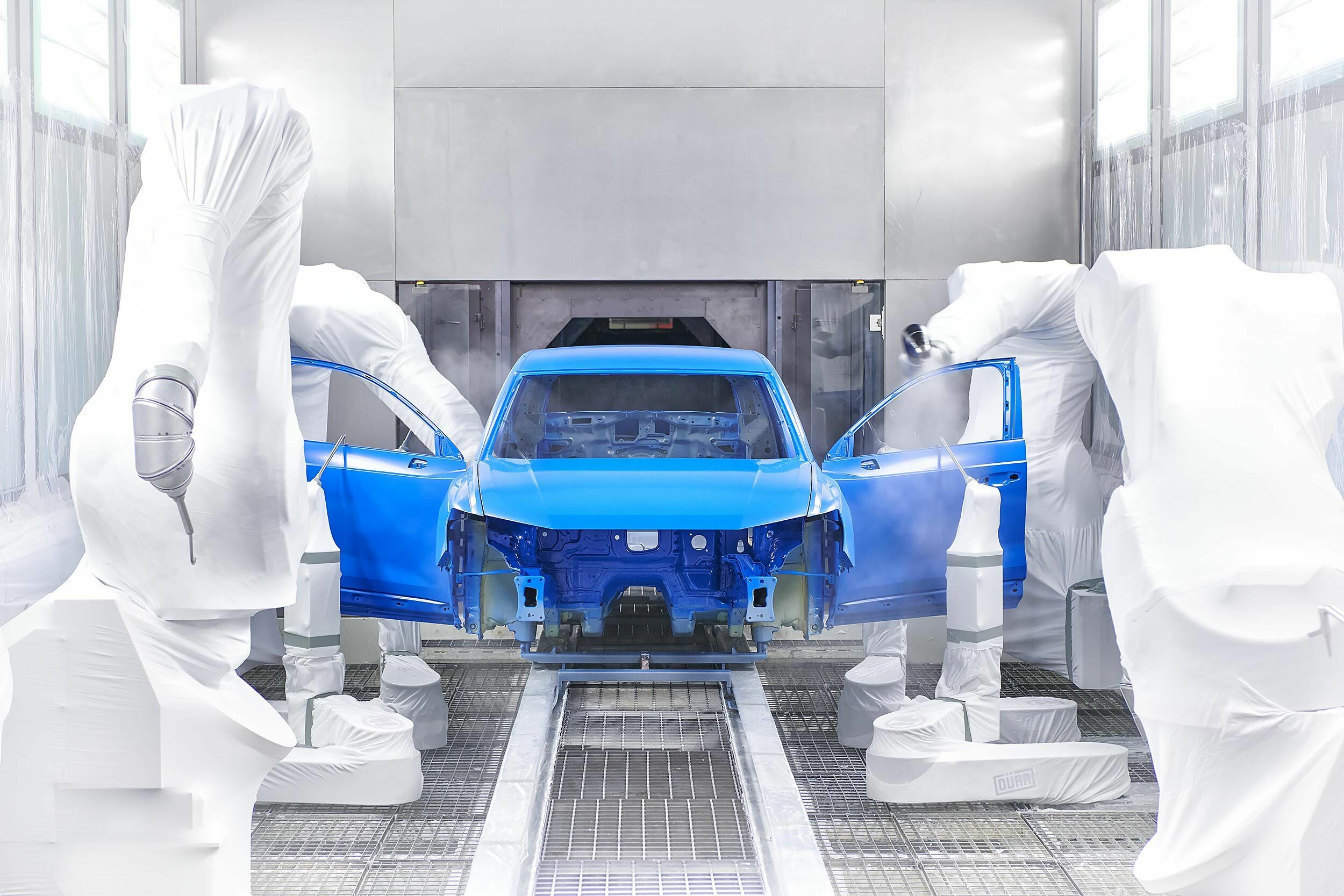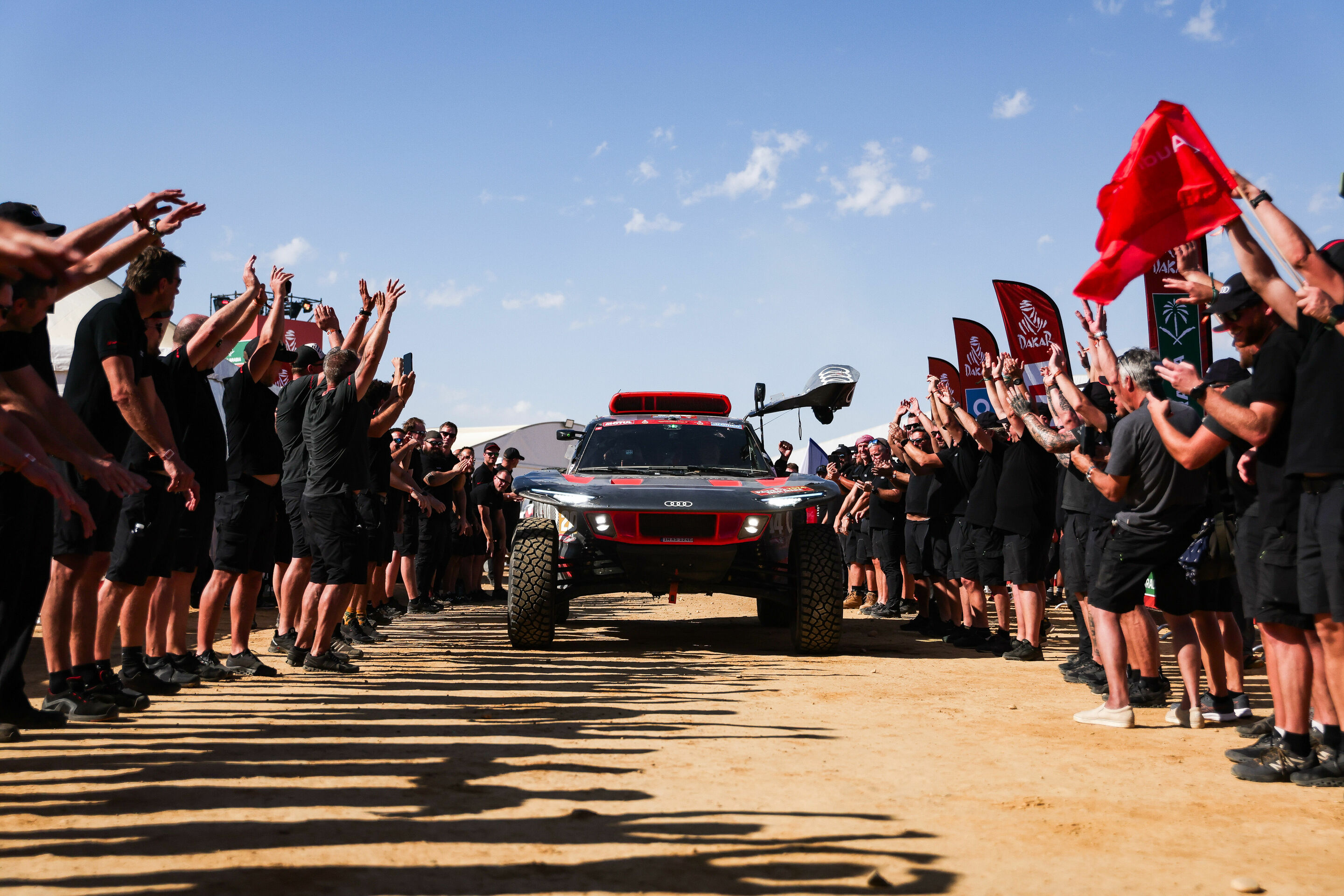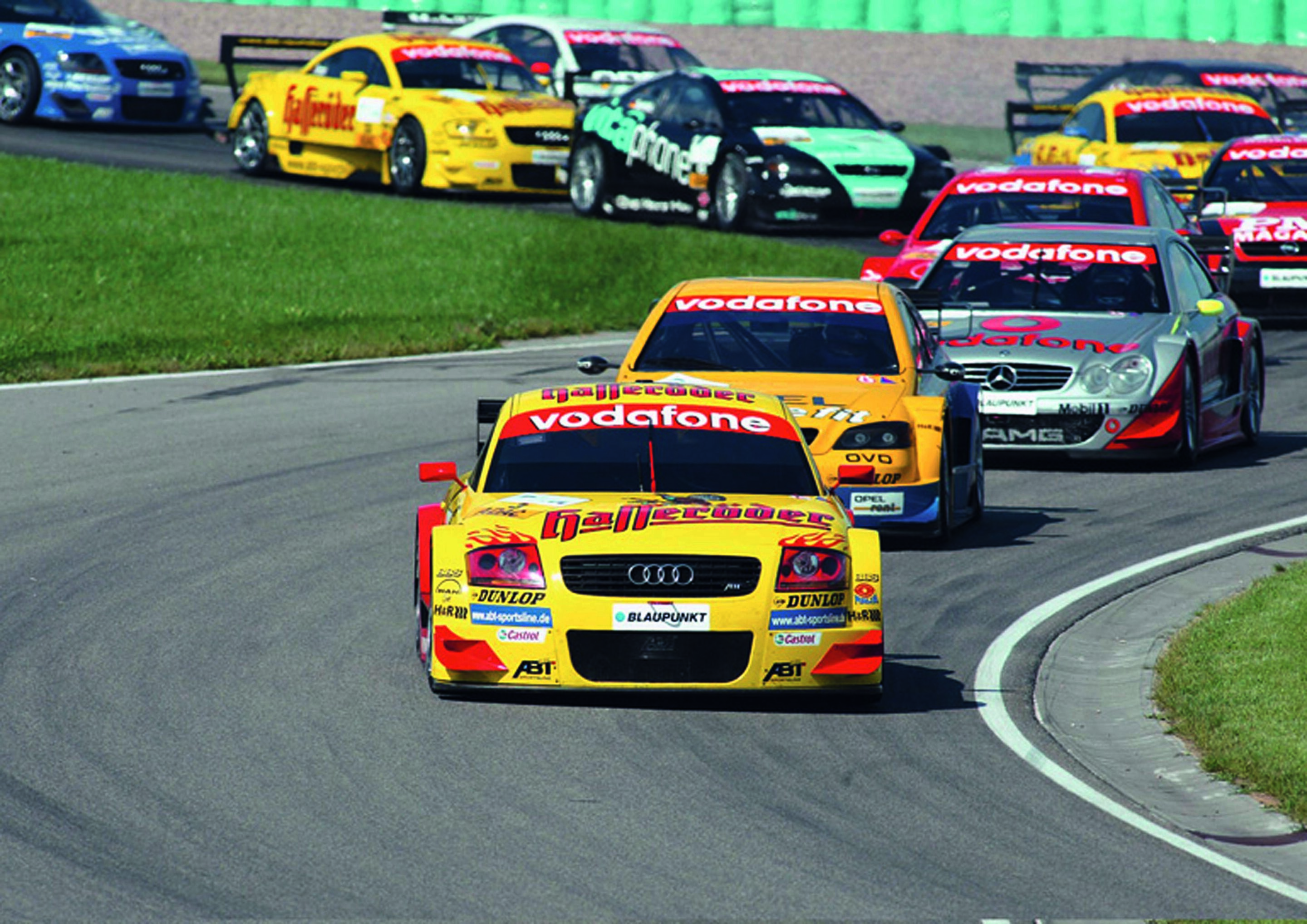Search
All search results for "Audi TT 2000"
(102)

Audi TT (1998 - 2023)
Looking back at a quarter of a century of TT history. When Audi presented the concept car at the 1995 IAA, the public’s reaction was quick and clear: “This car should be mass-produced – exactly as it is!” With the series debut in 1998, the Audi TT wrote design history and was built as a coupé and roadster over three generations.
Videos Audi TT (until 2023)
Engine type Inline 4-cylinder engine
Displacement in cc / bore x stroke in mm / compression 1984 / 82.5 x 92.8 / 9.3
Max. power output in kW (hp) / at rpm 235 (320) / 5600 - 6500
Max. torque in Nm (lb-ft) / at rpm 400 (295.0) / 2000 - 5600
Top speed in km/h (mph) 250 (155.3)
Acceleration, 0-100 km/h (0-62.1 mph) in sec 4.5
Fuel consumption, combined according to WLTP in l/100 km (US mpg) 8.4 - 8.2 (28.0 - 28.7)
CO2 emissions, combined according to WLTP in g/km (g/mi) 190 - 187 (305.8 - 300.9)
Unladen weight without driver / with driver / gross weight limit in kg (lb) 1420 (3130.6) / 1495 (3295.9) / 1815 (4001.4)
*Additional equipment and accessories (attachments, tire size, etc.) may change relevant vehicle parameters, such as weight, rolling resistance and aerodynamics, and, alongside weather and traffic conditions as well as individual driving style, may affect a vehicle’s fuel consumption, CO2 emissions and performance figures. Consumption and emissions values are only available according to WLTP and not according to NEFZ for this vehicle.
 Technical details Audi TT
Technical details Audi TT
Engine type Inline 4-cylinder engine
Displacement in cc / bore x stroke in mm / compression 1984 / 82.5 x 92.8 / 9.3
Max. power output in kW (hp) / at rpm 235 (320) / 5600 - 6500
Max. torque in Nm (lb-ft) / at rpm 400 (295.0) / 2000 - 5600
Top speed in km/h (mph) 250 (155.3)
Acceleration, 0-100 km/h (0-62.1 mph) in sec 4.5
Fuel consumption, combined according to WLTP in l/100 km (US mpg) 8.4 - 8.2 (28.0 - 28.7)
CO2 emissions, combined according to WLTP in g/km (g/mi) 190 - 187 (305.8 - 300.9)
Unladen weight without driver / with driver / gross weight limit in kg (lb) 1420 (3130.6) / 1495 (3295.9) / 1815 (4001.4)
*Additional equipment and accessories (attachments, tire size, etc.) may change relevant vehicle parameters, such as weight, rolling resistance and aerodynamics, and, alongside weather and traffic conditions as well as individual driving style, may affect a vehicle’s fuel consumption, CO2 emissions and performance figures. Consumption and emissions values are only available according to WLTP and not according to NEFZ for this vehicle.
 Company history
Company history
1993 AUDI HUNGARIA MOTOR Kft. is founded as a 100-percent subsidiary of AUDI AG 1994 Start of four-cylinder engine series production; Official opening of the engine plant 1997 Start of V6 engine series production; Start of V8 engine series production 1998 Establishment of the crankshaft and connecting rod processing line; Start of automobile assembly with the Audi TT Coupé 1999 Start of series assembly of the Audi TT Roadster models 2000 Start of production of diesel engines with pump-nozzle technology 2001 Opening of the Engine Development Center; Assembly of the Audi A3/Audi S3 models begins in Győr, produced until 2003 2005 June 2005: 10 millionth engine from Győr; Audi Hungaria toolmaking goes into operation 2007 Start of production of the Audi A3 Cabriolet; Start of series production of four-cylinder common-rail diesel engines; Start of series production of ten-cylinder biturbo engines 2008 Start of series production of twelve-cylinder TDI engines 2010 Opening of the engine start-up center Start of series production of the Audi RS 3 Sportback 2011 April 2011: Production of the 20 millionth engine from Győr July 2011: Groundbreaking ceremony for plant expansion 2012 May 2012: Topping-out ceremony for the new automobile plan Nov. 2012: Start of production of the new 1.2 and 1.4 liter four-cylinder engines 2013 Audi Hungaria opens its expanded plant in June 2013; series production of the Audi A3 Sedan and the Audi A3 Cabriolet begins at the same time; Sept. 2013: 10,000 employees at the plant; Nov. 2013 Double anniversary: 500,000.
 Motorsport history
Motorsport history
Audi is positioning itself as the sportiest manufacturer in the premium segment and has a perfect basis for this: motorsport. Sportiness, advanced technology and emotional design are the foundations for the success of the Audi brand. Valuable genes for this come from motor racing.
Entering the premier class of motorsport
Audi is facing what is arguably its biggest challenge in motorsport. From the 2026 season, the brand will be competing in the FIA Formula 1 World Championship with its own works team. Development of the drive unit (“Power Unit”) is in full swing at the Neuburg an der Donau site. Thanks to open competition, Formula 1 serves as a technology driver for both electromobility and sustainable e-fuels. Photo: Showcar with Audi F1 launch livery
Milestones
Success with electric drive concepts
Sustainability does not only play an important role in the premier class of motorsport. The company began electrifying its motorsport program in endurance racing in 2012. With the first victory of a hybrid racing car at the Le Mans 24 Hours, Audi achieved a pioneering feat at the world’s most important endurance race in 2012. The Audi R18 e-tron quattro remained unbeaten three times in a row at Le Mans in 2012, 2013 and 2014. Many other innovations such as the Audi laser light complement the pioneering technical achievements. Drivers and manufacturers titles with the hybrid sports car in the 2012 and 2013 FIA World Endurance Championship (WEC) complete the Audi sports car era, which ended in 2016. Following the LMP program with the R18 hybrid sports car, Audi was the first German car manufacturer to compete in the all-electric Formula E racing series in the 2017/2018 season. With four victories and a total of eleven podium finishes, Audi Sport ABT Schaeffler clinched the team championship after twelve races. Things continued to go electric after that: the brand with the four rings competed in the famous Dakar Rally from 2022 with an innovative prototype.
 Audi Tradition - Anniversary Dates 2025
Audi Tradition - Anniversary Dates 2025
Anniversary Dates 2025 Audi Tradition 2 Anniversary Dates 2025 Contents Anniversaries in Our Corporate History May 2000 25 years Market Launch of the Audi allroad quattro ....5 June 2000 25 years Sales Launch of the Audi RS 4 B5 ...............6 June 2000 25 years Market Launch of the Audi A2 ..................... 7 December 2000 25 years Audi museum mobile Ingolstadt ................9 March 1990 35 years Presentation Audi duo .............................10 September 1990 35 years First Appearance Audi Coupé S2...............11 January 1985 40 years Renaming of Audi NSU Auto Union AG to AUDI AG ..........................................................12 Autum 1985 40 years Audi Introduces Fully Galvanized Bodies in Mass Production ...............................................13 February 1980 45 years Audi 200 5T – Audi’s First Turbocharged Petrol Engine .......................................................14 Oktober 1975 50 years Audi 80 GTE ...........................................15 End of 1975 50 years Start of Porsche 924 Production in Neckarsulm ......................................................16 Oktober 1970 55 years Market Launch of the Audi 100 Coupé S ....17 September 1965 60 years Reintroduction of the Audi Brand ..............18 1965 60 years NSU Prinz 1000 TT and NSU Typ 110 ........ 20 September 1955 70 years Large DKW 3=6 ....................................... 22 Audi Tradition 3 Anniversary Dates 2025 End of 1955 70 years DKW Plastic Bodies .................................. 23 August 1950 75 years First DKW Passenger Car After the War ..... 25 December 1945 80 years Establishment of the Central Depot for Auto Union Spare Parts in Ingolstadt ................ 26 February 1935 90 years Introduction of the Horch 850 Series ........ 27 February 1935 90 years Roadster Models of 1935......................... 28 Audi Tradition 4 Anniversary Dates 2025 Contents Motorsport 2000 25 years Audi’s First Victory at Le Mans .................. 30 1990 35
 Successes spanning more than a century
Successes spanning more than a century
The success story of AUDI AG in motorsport Victories and titles since the beginning of the last century
Audi is positioning itself as the sportiest manufacturer in the premium segment and has a perfect basis for this: motorsport. Sportiness, advanced technology and emotional design are the foundations for the success of the Audi brand. Valuable genes for this come from motor racing.
Entering the premier class of motorsport Audi is facing what is arguably its biggest challenge in motorsport. From the 2026 season, the brand will be competing in the FIA Formula 1 World Championship with its own works team. Development of the drive unit (“Power Unit”) is in full swing at the Neuburg an der Donau site. Thanks to open competition, Formula 1 serves as a technology driver for both electromobility and sustainable e-fuels. Success with electric drive concepts Sustainability does not only play an important role in the premier class of motorsport. The company began electrifying its motorsport program in endurance racing in 2012. With the first victory of a hybrid racing car at the Le Mans 24 Hours, Audi achieved a pioneering feat at the world’s most important endurance race in 2012. The Audi R18 e-tron quattro remained unbeaten three times in a row at Le Mans in 2012, 2013 and 2014. Many other innovations such as the Audi laser light complement the pioneering technical achievements. Drivers and manufacturers titles with the hybrid sports car in the 2012 and 2013 FIA World Endurance Championship (WEC) complete the Audi sports car era, which ended in 2016. Following the LMP program with the R18 hybrid sports car, Audi was the first German car manufacturer to compete in the all-electric Formula E racing series in the 2017/2018 season. With four victories and a total of eleven podium finishes, Audi Sport ABT Schaeffler clinched the team championship after twelve races.
 Audi’s most important motorsport successes
Audi’s most important motorsport successes
An overview of the most important successes from the factory teams and customer racing.
2024 Winner Dakar Rally (Audi RS Q e-tron) Winner Gulf 12 Hours (Audi R8 LMS GT3) Winner Dubai 24 Hours (Audi R8 LMS GT3) Winner Nürburgring 24 Hours (Audi R8 LMS GT3) Winner Belcar Endurance Championship TA Class (Audi RS 3 LMS) Winner British Endurance Championship (Audi R8 LMS GT3) Winner Coppa Italia Turismo (Audi RS 3 LMS) Winner Extreme Supercars Driven by Dunlop (Audi R8 LMS GT3) Winner FFSA GT4 France Pro-Am (Audi R8 LMS GT4) Winner GT America powered by AWS SRO3 Drivers (Audi R8 LMS GT3) Winner GT Sprint Challenge GT3 (Audi R8 LMS GT3) Winner GT Sprint Challenge GT4 (Audi R8 LMS GT4) Winner IMSA Michelin Pilot Challenge Drivers (Audi RS 3 LMS) Winner International GT Open (Audi R8 LMS GT3) Winner South Island Endurance Series 3 Hour (Audi R8 LMS GT3) Winner Sports Car Championship Canada presented by Michelin TCR (Audi RS 3 LMS) Winner TCR European Endurance (Audi RS 3 LMS) Winner TCR Italy (Audi RS 3 LMS) 2023 Winner Sepang 12 Hours (Audi R8 LMS GT3) Winner Mugello 12 Hours (Audi R8 LMS GT3) Winner Spa 12 Hours (Audi R8 LMS GT3) Winner Monza 12 Hours (Audi R8 LMS GT3) Winner Thunderhill 25 Hours (Audi R8 LMS GT3) Winner 24H Series European Championship GT3 Drivers (Audi R8 LMS GT3) Winner Belcar Endurance Championship (Audi R8 LMS GT2) Winner China Endurance Championship (Audi R8 LMS GT3) Winner Coppa Italia Turismo (Audi RS 3 LMS) Winner Coppa Italia Turismo Endurance (Audi RS 3 LMS) Winner Macau Guia Race (Audi RS 3 LMS) Winner North Island Endurance Series 3 Hour (Audi R8 LMS GT3) Winner Eset Cup Sprint (Audi R8 LMS GT3) Winner Eset Cup Endurance (Audi R8 LMS GT3) Winner GT America powered by AWS GT2 (Audi R8 LMS GT2) Winner GT2 European Series Pro-Am (Audi R8 LMS GT2) Winner GT4 European Series powered by Rafa Rafa Racing Club Pro-Am Drivers (Audi R8 LMS GT4) Winner GT60 powered by Pirelli (Audi R8 LMS GT3) Winner GTC Race GT3 Overall championship (Audi R8 LMS GT3)
 End of an era: Audi and ABT Sportsline’s long track record in the DTM
End of an era: Audi and ABT Sportsline’s long track record in the DTM
A quarter of a century of cooperation in Germany’s number 1 racing series Strong record with five drivers titles, 78 victories and 92 pole positions Long-standing protagonists shaped a trusting relationship
A grand finale to a quarter of a century of extraordinary cooperation: Audi and ABT Sportsline entered the DTM finale at the Hockenheimring for the last time together and kept the title fight exciting right to the end. In the end, Kelvin van der Linde finished second in the standings in the 2024 season after a race win on Saturday. Since May 28, 2000, the team from Germany’s Allgäu region has relied on racing cars with the four rings in exactly 333 DTM competitions. With five drivers titles, 78 victories and many other best performances, the track record of both partners is overwhelming compared to the competition.
“At Audi Sport, we are proud to have celebrated so many successes with ABT Sportsline,” said Rolf Michl, Managing Director of Audi Sport GmbH. “Together we have grown during this long phase and have written a huge piece of motorsport history with many unforgettable successes. This period was also legendary in human terms. A big thank you to Hans-Jürgen Abt, CEO of the ABT Group, Thomas Biermaier, CEO of ABT Sportsline, Head of Sports Marketing Harry Unflath, ABT Motorsport Director Martin Tomczyk and the many other hard-working hands from Kempten who made this era possible.” The journey began with an Abt-Audi TT-R developed in-house in the 2000 season. As early as 2002, Laurent Aiello beat the competition from two manufacturers with the private team’s striking yellow racing car and won the first DTM title for ABT Sportsline. After Audi returned to the prestigious championship in 2004, the team from Kempten was once again in first place. That year, Mattias Ekström celebrated his first championship win in an Audi A4 DTM fielded by Hans-Jürgen Abt’s team.

